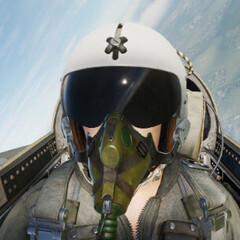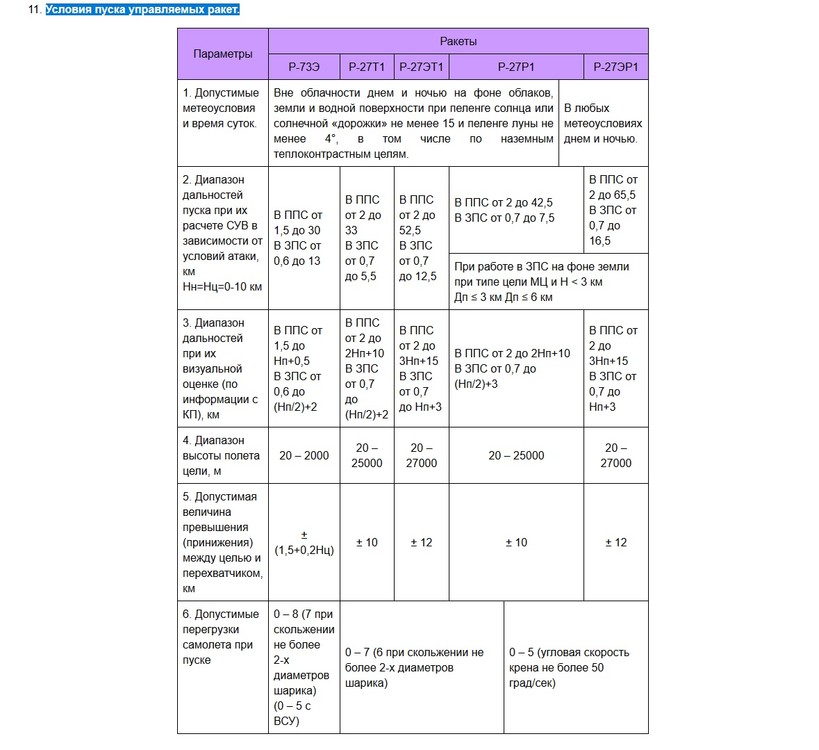Leaderboard
Popular Content
Showing content with the highest reputation on 09/22/24 in all areas
-
I want to have full-fidelity Su-25 in DCS. Why: I love Su-25 It's soooo relevant these days (ofc a way more relevant than MiG-29) It's legendary (even more legendary than MiG-29 IMHO) We have Afganistan map, but don't have FF Su-25, please tell me that it's not a joke Su-25 from FC2024 is playable and flyable. But it lacks system modelling (especially weapons system and navigation system) and some flight model improvements. P.S. Please9 points
-
Dear all, Summer has come to an end and autumn is upon us. We hope you all had a great time during summer and of course, plenty of vacation to hit the beaches, enjoy cool drinks and fly some DCS. After the F-4E release we gave the team some air to breathe and to recharge, as mentioned before, however we have long since returned to advance our roadmap. We apologize for being a bit more quiet with updates the past few months, as we collected and prepared ourselves for a productive rest of the year 2024. Hence we felt it was time to bring you a comprehensive development update for our modules again, and we are delighted to do so. The team has been hard at work introducing new features, refining systems, and addressing numerous bugs to enhance your simulation experience. In this update, we will be diving into the latest developments across the DCS: F-4E Phantom II, DCS: F-14 Tomcat, and DCS: AJS37 Viggen modules. Each aircraft has received dedicated attention to ensure you enjoy the highest levels of authenticity and performance. Let's explore the exciting new features and fixes in detail. DCS: F-4E Phantom II - NEW Mini-Campaign - FROG-7 As you all know, our commitment to content in Heatblur modules is unparalleled and a plethora of new missions are planned for all our modules, including a new and free campaign for the F-4E Phantom II. Enjoy this little mini-campaign, which sets the mood for the larger, free campaign coming a bit later - Days of Atonement, following events of the Yom Kippur War. FROG-7: On the night of October 9 1973, Syria escalated the Yom Kippur War further by launching FROG-7 rockets at Israel's northern airbase, Ramat David. At 03:35, the missiles struck, killing one Israeli pilot and wounding several soldiers. Additional rockets landed in civilian areas, including Migdal HaEmek and Kibbutz Gvat, spreading fear and destruction among the population. The Israeli government decided to retaliate decisively. The very same morning the IAF launched strikes deep into Syria, hitting core military installations and infrastructure to cripple the Syrian war-making efforts and to prove that Israel was both still capable and willing to attack its enemies deep in their territory. These attacks were also intended as a deterrent to Jordan to enter the war. Relive some of the events following the October 9 FROG-7 attacks, including the famous Raid on the Syrian General Staff Headquarters in Damascus. The missions have been meticulously recreated based on a plethora of historical data and SME input from IAF veterans who flew during the Yom Kippur War, including the real life routes that have been used and events occurred during these missions - with as few liberties taken as possible within the limits of DCS. DISCLAIMER: This campaign is semi-historical, and while it tries to depict historical events as accurately as possible within the limits of DCS, it is in no way motivated by any political, or religious ideologies, and is not connected to any recent events. Rather, it is meant to let the player experience one of the most intensive periods of aerial combat for the F-4E Phantom II. Requirements: DCS: F-4E Phantom II | DCS: Syria | Optional: DCS: Combined Arms DCS: F-4E Phantom II - Systems, Improvements and Features We prepared a long list of bug fixes, systems improvements and new features for this update. As many of you requested, we finally added brightness control logic for the UHF repeaters. This improves the visibility across various lighting conditions, enhancing pilot experience in different operational environments. Furthermore, individual backlighting has been added for the WRCS ALT/RANGE placards. Based on the selected Delivery Mode, this backlighting will now indicate which of these is actively in use, bringing more situational awareness during flight. Night operations have also received attention with the addition of backlighting for the WSO ECM and KY-28 panels, improving usability in low-light scenarios. DCS: F-4E Phantom II - RWR Significant updates have been made to the RWR (Radar Warning Receiver). The RWR now detects active radar homing missiles, providing pilots with earlier and more accurate warnings of inbound threats. The RWR database itself has been updated to include new and previously undetected threats, making it a more reliable tool during combat operations. In addition, we've introduced new handoff sounds for emitters, which include the AIM-120, AIM-54, R-77, and Tornado platforms, allowing pilots to better manage their responses to multiple threats. Finally, ALR-46 RWR target separation (TGT SEP) button is now working, it lets you adjust the way the contacts are displayed to avoid symbols overlapping in environments that are highly saturated with emitters. DCS: F-4E Phantom II - New Weapons Weapon systems for the F-4E have also seen several updates. The BDU-33 practice bombs have been added to the inner wing pylons, offering pilots the opportunity to practice their bombing runs with increased realism. We've replaced the GBU-24B/B Navy Variant with the more accurate GBU-24A/B Air Force Variant, ensuring that the correct ordnance is modeled. For those flying the German F-4F, we have introduced the BL755 and SAMP-250KG LD Bombs mounted on TERs, accurately representing the specific loadouts used by the German air force. We've also included a visual-only ACMI/TACTS pod, adding to the authenticity of the aircraft’s visual representation without functional implementation. Furthermore, we have fine-tuned the sight depression limit, adjusting the mechanical range from -225 mils to -250 mils, offering more flexibility in targeting. Along with these changes, we have fixed issues with the Sight Reticle Range Bar, ensuring that it correctly indicates ranges in different modes. DCS: F-4E Phantom II - JESTER AI Navigation Update JESTER has received significant updates in this release, most importantly improving his navigation capabilities. Support for special waypoint types has been introduced, which can now be set up through either the Jester Wheel or the Mission Editor. These waypoint types include Identification Point (IP), Target (TGT), Visual Identification Point/ Nav Fix (VIP), CAP station between two subsequent CAP points and according QnA to set the desired vul-time (CAP), FENCE-IN (F-IN), FENCE-OUT (F-OUT), Homebase (HB), and Alternate (ALT), allowing for more sophisticated mission planning and execution. Jester also now supports in-flight INS updates through the NAV FIX function, which can be initiated via overflight of a VIP special waypoint, ensuring that navigation data can be refined and improved mid-flight. Details of these new functionalities can be found in the manual, which has also been updated. These new special waypoints will already receive more updates in the subsequent patch, such as a “silent VIP”, which allows for more low-key nav fixes on else regular waypoints, as was done for instance by the IAF during the Yom Kippur War, when flying their routes from IP Tower to IP Tower over the else featureless desert terrain of the Sinai. Additionally we want to tie checklists to waypoints such as Fence In and Fence Out in the future, and also allow for a more autonomous attack planning by JESTER based on your IP-TGT relation and mode selection. We are also currently working to implement a comprehensive list of set commands, such as you already know from the F-14, to allow for further mission scripting. DCS: F-4E Phantom II - INS Alignment First, we’ve reworked the entire alignment procedure. This new system is designed to streamline the alignment process, making it smoother and more efficient, ensuring your navigation systems are even more precise and dependable. Additionally, we’re introducing new dialogue options with Jester. These will provide greater flexibility in communication, giving you more control and interaction during crucial operations. Whether it's alignment or troubleshooting, you’ll have clearer, more dynamic exchanges with Jester. To further assist pilots, we’re adding more detailed information about the alignment process. This will give you a deeper understanding of each phase of the procedure, helping you anticipate and manage the alignment more effectively. With this added clarity, you’ll be able to ensure everything is properly set up for the most accurate flights possible. In cases where an alignment fails, we’re introducing new options to handle these situations. Instead of leaving you without clear guidance, the updated system will offer corrective actions, providing a path to recovery and reducing downtime. DCS: F-4E Phantom II Bugs In terms of bug fixes, several critical issues have been squashed. We’ve addressed crashes related to homebase TACAN and some problems with the Heatblur UI. Radar antenna range gate acquisition issues that affected certain scenarios have also been fixed. Additionally, we have resolved crashes experienced by users with DCS installed on Unicode directory paths, such as those containing non-Latin characters. Another fix includes correcting the logic that was preventing ECM warm-up from skipping during hot starts. Lastly, we’ve resolved an issue with the Pave Spike STOW and WRCS/INS OUT lamps incorrectly illuminating during BIT 1 tests, ensuring these systems function as intended. Improvements have also been made to the control inputs. New 4/8-way hat steering binds have been introduced for the Jester Wheel, providing greater control over AI management. Self-accelerating knob binds have been added for various cockpit controls, such as the Sight Depression, HSI Course, Target Latitude/Longitude, and Bombing Pull-Up Timer, simplifying input management for these functions. You may want to remap some of your slow/normal/fast keybinds, though we kept these to offer you more choice. Several issues with broken bindings have also been addressed, and missing toggle and axis binds have been added for systems like the Antenna Switch, Anti-Skid, and Emergency Gear handles. Audio improvements for the F-4E are another highlight of this update. The engine sounds have been overhauled, offering a more immersive and authentic auditory experience that enhances the sensation of flying the Phantom. Canopy sounds have also been improved, adding further depth to the aircraft’s interaction with its environment. Visually, we’ve made several important updates. We fixed the external engine blades LoD00 - LoD01. The fuel tape visibility has been improved for better readability during flight. A previous issue where formation lights disappeared when zooming out has been resolved, ensuring consistent lighting visibility. The throttle animation has been updated to include afterburner detent sideways movement, bringing more realism to throttle operations. Various cockpit indicators and animations, including those for the HUD and other critical systems, have been reworked to enhance both visual fidelity and functional accuracy, and much more. Beyond these updates, we’ve refreshed the in-game manual to reflect all the latest changes and features, ensuring pilots have the information they need at their fingertips. Missions have also been updated to take advantage of these new capabilities, and new ones have been added for greater variety, introducing the first set of basic instant action missions for the new Afghanistan map, with more to follow. Additionally, we’ve introduced support for Historical Mode in the Mission Editor, allowing for more authentic mission setups. For mission creation, we’ve added new models, including an IP Tower and a GHQ Building, expanding the possibilities for mission design. Lastly, new liveries have been added, such as the Israel Kurnass 303 Toad 1967 livery with thanks Fish. DCS: F-14 Tomcat For the F-14 Tomcat, we’ve made several important updates to systems, weapons, controls, and more. One significant fix addresses an issue in NAVGRID mode, where true bearing was incorrectly displayed instead of magnetic bearing. We’ve also updated the TID repeater on the pilot's HSD, which now functions properly when the RIO selects TV mode. Laser code settings have been removed from the Kneeboard and Mission Editor aircraft properties, and you should now use the new fuze settings for configuring these codes in the DCS rearm menu. Weapon adjustments for the F-14 include correcting the LAU-10 Zuni pod mass, reducing its weight by 150kg to reflect the correct loadout specifications. Unnecessary fuze settings for the BDU-33 practice bombs have been removed. We’ve also made the TARPS pod compatible with a wider range of munitions, including the Mk 82, Mk 83, GBU-12, and GBU-16, offering more flexibility for mission planning. Several fixes have been made to resolve corrupted weapon names in the Jester Ordnance Menu, and we’ve aligned the default payloads between the two Tomcat variants to ensure consistency. We’ve also made several fixes to the cockpit controls. Issues where controls were clickable from the wrong cockpit have been addressed. Three-position switches now move in the correct direction when left or right-clicked, and tooltips for the IFF panel have been adjusted to provide clearer and more accurate information. In addition to these updates, we’ve also added a first new set of basic instant action missions for Afghanistan with more to follow. Big thanks also to Kaba for an overhaul of the Cage the Bear campaign. Please note that older, obsolete versions have been removed, to keep the maintenance slim. DCS: AJS-37 Viggen The AJS-37 Viggen has received updates and bug fixes to improve both realism and gameplay. We’ve updated the airfield database to include support for the new Kola map and increased the maximum number of airfield reference codes to 98. The "Beredskapsvarning" warning is now enabled in LANDN P/O mode, adding more accuracy to emergency operations. Pilots can now select how REF codes are generated through a newly added Special Option, allowing for more customized mission setups. Several critical bug fixes have been implemented. An issue preventing the RB15 missile from locking onto targets when released in NAV mode has been resolved, ensuring more reliable missile targeting. We’ve also fixed problems with saving manually set runway direction and TILS data, providing better operational consistency. The BAS selector loop issue, which occurred when spawning at bases with IDs greater than 72, has also been addressed. Additionally, we’ve adjusted the flash rates for ground collision and "beredskapsvarning" warnings to 5 Hz and 2.5 Hz, respectively, bringing them in line with real-world operations. In terms of input controls, we’ve added toggle bindings for the ATT and HÖJD autopilot controls, offering more flexibility and ease of use. As with the other modules, new instant action missions have been added for the Afghanistan map, and existing ones updated to reflect the latest changes. Mission makers now have the option to filter out FARPs from the REF code list by adding "-REF-" to the unit name, allowing for more refined mission design. The manual has also been updated to provide comprehensive guidance on these new features. Q3 2024 and what the future holds The rest of the year is already packed full with tasks for the team, as we continue our efforts on the side of the release for the Viggen and the F-14, (our upcoming MSFS modules, as a side note,) the Eurofighter, of course and more. We are currently wrapping up the A-6 AI development, which we hope to bring to you in one of the next updates. And we hope that we can bring the early F-14A to you before end of the year as well. Beyond that, we will of course have more in depth updates for you on the development of our various modules as the year keeps moving along. We want to extend our heartfelt gratitude to our dedicated community for your ongoing support and invaluable feedback. Your passion and engagement continue to inspire us to extend our efforts in delivering the highest quality simulation experience possible. Thank you for being part of our journey to push the boundaries of flight simulation. Fly safe, and see you in the skies! The Heatblur Team7 points
-
To date, F-16 aircraft possess this "unique" feature, which causes a lot of negativity on multiplayer servers. For example, F-18 and A-10C aircraft, despite their already venerable age, which is greater than that of the F-16, have not received this mechanic, even though it was stated many years ago that this alignment mechanic would be added to all aircraft. As a result, on many multiplayer servers, we end up with discrimination, because only F-16 pilots are forced to struggle with this procedure, and even after performing it, they get much worse alignment accuracy compared to the accuracy that F-18 and A-10C pilots get automatically without this procedure. What do I suggest? - Add a checkbox for "Aligned Maverick" in the special settings, as well as in the mission editor. This would mean that if you check this box and take a "cold" aircraft, you would never have to align it again. This function is very important, and I'm surprised it wasn't implemented earlier... It would be very helpful on servers, and all F-16 pilots would be very grateful to you, especially since it's very easy to implement. Thank you for your attention!5 points
-
glad you like the RC-135, but that's not mine. Thats a @Backy 51@Eight Ball creation I played with the P-8 a little and already fixed the front wheel animation; I'll release an update whenever I get around to adding the thrust reversers5 points
-
I thought DCS aimed to be the most realistic consumer-level military flight sim possible? If this gets added as a mod, so be it. But dedicating time and effort into this request as the official developer, while already packed with work (and behind self-imposed schedule on a lot of promised features), is in my humble opinion not the right thing to do. There’s something to be said for giving the customers what they want, but please be reasonable…5 points
-
@FWind It's great that you've posted this test again, so that I can point out some differences based on the data you've provided. From my performance chart taken from the game "vanilla" how is it now no modifications made by me, I was able to simulate a shot very similar to the one provided by the NASA study unfortunately I just didn't get the same total flight time because I needed a target to be able to adjust the loft, (with a very similar climb profile as you can see comparing the altitude charts) The missile can barely get above mach 4 while the missile should reach approximately 4.8 mach based on NASA tests. Please take note that this NASA simulation its calculated with 1000lb missile as you can see on "launch condition": Here we have the results from Nasa: Please note that NASA indicates that the missile has a window above mach 4 of 41 seconds, what we have today replicating the same launch is a window of around 2 to 3 seconds. which in my opinion seems to be a very significant “lack” of performance, since all that less speed will interfere with the missile's travel time, leading to various consequences. Now I'm going to present two case studies of my own where I changed the code of the missile and adjusted it according to the thrust of 18318N and burn time of 23.8 sec that @tavarish palkovnikprovided: This first one: I didn't modify the loft profile of the standard used by the missile, even though I still achieved a speed of 4.6 mach, which is much closer to the NASA test: On the second one:, I modified the loft profile so that the missile achieved a higher peak speed of 4.8 mach , which gave me practically identical performance as NASA test, at least in terms of kinetic energy: For these reasons that I presented in my previous posts, plus those that I'm showing here now together with the data provided from NASA test and Tavarish Calculations, I believe that today we have a simulation that tends to be incorrect in some kinectics aspects of the missile. Remembering that at no point do I want to point fingers or say that the work hasn't been done well, but that it can be improved, not only in the fact of the guidance and loft profile as I showed in my tests that just a small adjustment of the standard profile that is currently configured made me gain peak speed in the missile, we are not far away, it is necessary to recognize all the work that Heatblur has done to date, but the fact that they are excellent developers does not exempt them from the fact that at some point they can also make mistakes, just like you and me, we are all human. What I'm looking for is to try to help so that we can have the best possible digital recreation of this iconic airplane.4 points
-
Hi, I would absolutely love to see some official SAR objects like for an example life floats, pilot with life vest and colored fluid around him. This would ad to some fun and interesting mission opportunities. If also these units could pop flares and stuff like that would be absolutely amazing! And yes I am aware that some mods have done this but as I said I would love to see this be an official addition! //Lars from Sweden3 points
-
3 points
-
Hey Crud, thanks for reporting the issue with the Pilot Boat. The problem is a .tga texture. The BANO-W.tga texture is the culprit. DCS doesn't like those textures anymore. I opened the shape file in MV and received the error below. Normally I would receive that error while playing. I will correct the issue today and send out an update. Thanks again. Everyone, I have to start over creating 3d mods for DCS. Why you may ask? One word. PAIN!! Let's call my Pain "Paul" and Fibromyalgia which is not curable "Frank". Paul and Frank have given me a hard time over the past few weeks. They do not let me focus on doing anything and that includes modeling. I haven't worked on a mod in a couple of weeks now. Every time I start working on a model I get disturbed by Paul or Frank. I can deal with Paul to an extent but Frank on the other hand debilitates me so badly that I can't function properly. It's hard to describe so I won't bore you with it. If you want to know what Fibromyalgia is please research it and you will better understand what I deal with. No matter what I will keep fighting it. Starting today, I will start over fresh creating mods. I will look over the FREMM Frigates to see if I need to recreate them. Either way, I will keep you all posted. All take care of yourself. I will let you know once the Pilot boat has been updated. Thanks for your patience.3 points
-
So, in this last image ''red'' case is Phoenix with its nozzle expansion ratio measuring 18,5 and ''blue'' dots are various tactical motors, there are various Sparrows, Sidewinders, Falcons, than Amraam, Genie, pallet of Rs, 23, 60, 27, 27ER, 33 also some air-to-ground like Harm, Hellfire etc. Maverick is missing because its motor is also extreme with expansion ratio measuring just 2, extreme but on other side from Phoenix, so much extreme that third method is not even applicable. But what image is showing? It's showing that all these motors are more or less grouped together, alright R-60 and Hellfire pop out a bit but still everything is under control and understandable why. And all these motors work just fine down, and also up with some slight gain getting with altitude. Only Phoenix is with huge difference in thrust at sea level and up there. That's why it is special case, it is intentionally designed to give maximum where tacticians placed it. Other motors are not so much customized but made as universal, fine at sea level, better when higher but that all is measured in just few percentages...except with dual thrust motors (R-33, AIM-7F, AIM-120B and AGM-88) where this percentage is rising significantly when motor works in sustain stage. I got impression that when common internet write about this altitude gain only external diameter of nozzle is in focus. And that is wrong, without nozzle expansion ratio and chamber pressure all that story is useless. AIR-2 Genie has huge nozzle exit, 296mm is exit diameter what is bigger then Phoenix's bell of 238mm but expansion ratio is just 6,7 and gain with altitude no matter of huge exit area is just slight, nominal sea level thrust of 155kN will be improved just for few percent Maybe is time now to left this, it is up to you guys now to fight for it, to get Phoenix in game in more realistic shape. It will ask for different approach but special case looks for special approach. If I can help with something else just shoot3 points
-
Die Su-25(A) ist die Basisversion, für "Erdkampf"/Nahunterstützung von Bodentruppen konzipiert, hauptsächlich mit ungelenkten Waffen unterwegs (einzelne lasergelenkte Luft-Boden-Raketen gehen aber auch). Die Su-25T ist eine modifizierte Variante, die ursprünglich mal speziell für die Bekämpfung von Panzern vorgesehen war und daher auch die Vikhr-Lenkrakete tragen kann, die auch vom Ka-50 eingesetzt wird. Die -T hat das interne optische Zielsystem Shkval, damit kann sie mehrere Lenkwaffen einsetzen, z.B. optisch oder lasergelenkte Raketen und Bomben. Zudem kann sie den Fantasmagoria-Pod tragen, um Radarstellungen zu vermessen, und sie ist mit dem Mercury-Pod begrenzt nachtkampffähig. Die -T ist aber nie in Serie produziert worden, davon gab/gibt es nur ca. 10 Flugzeuge, die aber wohl im Tschetschenienkrieg eingesetzt wurden. Im die Flugleistungen der -A sind besser, die -T fliegt sich insbesondere mit (zu vielen) Waffen wie eine schwangere Kuh.3 points
-
I find it curious that given the plethora of posts regarding frame rate drop / stuttering amd significantly poorer overall performance since the last couple of updates that there is nothing specifically in the newsletter regarding this? Is it being covered by the broad brush of "This update will address Aircraft AI, Ground AI, weapons, and terrain optimisations."?3 points
-
Im sorry to stress this, but the F-4E is not a carrier compatible plane. Yes, it has a tailhook. And we simulated it fully, you can land with it on a carrier just like you could IRL with a -E in theory, with all the consequences this has. We understand people want to cosplay as Navy Phantom while waiting for the actual module that will come at some point in the future. We have heard the question and are possibly considering doing something about it. You have to understand though that time and resources are unfortunately very limited and our schedules are packed. I would love to be able to tell you "yes, cool idea, its in the next update", but this unfortunately just doesnt work. The request is a low prio item for us and its unfortunately also not a quick and easy thing to add.3 points
-
3 points
-
A little video to showcase the improvements to the Su-30's flight model coming in a future update:3 points
-
The Vietnam era for DCS is soon to be one of the most deeply represented of all periods. Projects in development include the F-100 Super-Sabre, A-1 Skyraider, F8 Crusader, alongside already existing modules like the F-4E Phantom II, F-5 Tiger II, Huey, MiG 19, and 21. Not to mention the exceptionally well-done A4 Skyhawk and OH6 modules. "In Country" is a group focused on this era, making an effort to thread the needle between realism and enjoyment in an environment of learning and skill development. We are organized by aircraft type, with mission design intended to realistically portray a Vietnam-like environment, threat provision, mission type, and platform roles. While we are very new, future plans include expanding support to red air as well. In a fully actualized picture, we would like to have a squadron or two of each aircraft type on both blue and red sides realistically structured providing multiplayer gameplay in well-designed missions on a regular basis. Our goal is to create an immersive and authentic experience that closely mirrors the challenges faced by pilots during this conflict while also promoting individual growth through logbook tracking and career progression in official events. We would like to unite a community of aviation and history enthusiasts committed to continual learning, teamwork, and shared interests in a realistic setting. Platforms currently supported: A4 Skyhawk F4 Phantom UH-1H Huey OH-6A Loach. Future plans include: Full support of Red Air squadrons including the MiG 17, MiG 19, MiG 21. Support for A6, F-100, and A-1. We offer: Realistic missions in a setting similar to that of the Vietnam War Balanced training and flight organization. Minimal mandatory flight time. Organization and structure. A community of aviation and history enthusiasts. Room to grow. Get in on ground level. Requirements: 18 years of age Microphone Passion for learning and history. Discord: https://discord.gg/kt368db4R42 points
-
I just bought Rising Squall and during the first mission I have a Mission script error: Object doesn't exist in function getPosition It happen many time during the mission. I need to press enter to close and return to DCS. DCS version 2.9.7.59263 In the mission file CI_00_v2.miz the MIST (Mission Scripting Tools) version is 4.3.74 (Sept 2016). The current version is 4.5.126 (Apr 2024) https://github.com/mrSkortch/MissionScriptingTools/releases/tag/4.5.126 . They have added "if Object.isExist(val.object) then " before the line "local pos = Object.getPosition(val.object)" Edit : By replacing the file CI_00_v2.miz\l10n\DEFAULT\mist_4_3_74.lua with mist_4_5_126.lua solve the issue...2 points
-
Weil du ein Glückspilz bist? Meist lautet die Kritik, dass die Maverick überhaupt nichts trackt. Grundsätzlich versuchen die Infrarot- und TV-Suchköpfe der verschiedenen Maverick-Varianten, beim Schwenken (en: to slew) Objekte mit hinreichendem Kontrast zu tracken. Im echten Leben könnte das also auch ein angefeuerter Grill oder eine von der Sonne aufgeheizte Fassade sein, oder für den TV-Sucher ist genau so denkbar, dass der ein Gestrüpp trackt statt den gut getarnten Schützenpanzer nebenan. Der Sucher der Maverick ist normalerweise nicht auf den Boden stabilisiert, flitzt deswegen gerne mal weg und trackt das erste Ding mit hinreichend Kontrast, das er findet. Wenn du im A-10C II-Modul DMS Forward Long gedrückt hältst, während die Maverick SOI ist, sollte das als Gyro Stabilize fungieren, also gyroskopische Stabilisierung. Soweit ich mich erinnere, verhindert das Gedrückt-Halten von DMS Forward das Tracken von Objekten in der Maverick, und du kannst dann die Maverick gezielt über deinem Ziel loslassen. Nach dem Loslassen von DMS Forward sollte sie - hoffentlich - das korrekte Ziel tracken. Wir DCS-Piloten sind aber oft verwöhnt und suchen das Ziel mit dem TGP aus, slaven dann die Maverick darauf und kommandieren anschließend mit TMS Forward Short das Tracken des Objekts in der Mitte vom Zielkreuz der Maverick. In DCS wäre noch zu erwähnen, dass meines Wissens das Tracken von Objekten mit Kontrast im optischen oder Infrarot-Spektrum wohl implementiert sein soll, aber letztlich trackt die Maverick Objekte in der Welt von DCS. Und da springen beispielsweise Laternen- und Stromleitungspfähle gerne mal in den Vordergrund, obwohl dahinter ein viel kontrastreicheres Ziel steht oder fährt. "Unser" Problem ist also ein etwas anderes als in der echten Welt, aber im Prinzip müssen wir das gleiche machen wie echte Piloten: Lernen, wie das System funktioniert, was seine Schwächen sind, und wie wir uns dessen Stärken zu Nutze machen können.2 points
-
They do indeed remove rain from the windshields in the AH-64D and Mi-24P. The windshield wipers themselves don't appear to be implemented yet in the CH-47F. EDIT: And of course the next logical question being What about the other DCS helicopters?, there are reports for adding similar visual wiper effects to the others (Ka-50, Mi-8, and UH-1). In fact, BigNewy inquired about this on users' behalf just a few days ago, so it is certainly on the radar.2 points
-
And I was responding to someone saying that HB could work on it after the Eurofighter and A-6 are released. The next module in line after the A-6 is the carrier capable F-4. So of course I outright reject the idea that HB should waste time making the F-4E carrier capable during the time they should be focusing on the actual carrier-based F-4 they would be working on at that time. I'd rather have a proper naval F-4 and time spent modifying the F-4E to be fictional is time they could have spent working through their roadmap towards the actual naval module. Like Zabuzard and others have said, the F-4E is not a carrier capable plane and DCS is not intended to be a fantasy sim. It's aiming to be as realistic as possible and a carrier capable F-4E is not realistic in the slightest, given the missing equipment, altered landing gear and tires, different approach/landing profile, etc. As such, I would much rather HB focus on their other unfinished projects such as the A-6 AI, F-14A early, DMAS F-4E, the three other Forrestal carriers, basically everything still on their public roadmap before they waste time on a fantasy feature. I have no problem if someone wants to mod the F-4E to be carrier capable themselves, but to ask the devs to add fictional features when they already to plan to make a proper naval version is utterly ridiculous in my opinion.2 points
-
2 points
-
thx for your support guys. i ll come back to you for the news2 points
-
2 points
-
Well, honouring this request is the very definition of lowering HB standards The tail hook is not designed for it, the landing gear is not designed for it. The type of tyres is wrong for this purpose and have the wrong pressure, the aircraft’s structure is not designed for it, … So at the very least allowing the F-4E to safely operate from a carrier reduces the damage model to arcade level. What will be the consequences of that for everyone else? *edit* Also, how do you expect the Supercarrier LSO AI to deal with an F-4E in the groove? Not even the F-14 is properly supported…2 points
-
There are IT-forensic services that can recover data from failing drives. I‘m sure the community would help out with covering the costs.2 points
-
This is a no brainer. Implement the same standard for all aircraft or give the option to keep it consistent. Great recommendation.2 points
-
2 points
-
If you go back to the start of this thread 2 years ago, we already tested and compared the current missile to these fly out graphs. Spoiler they are extremely close. As in almost perfectly matching. Additionally you do have to modify the missile lua a bit to perform the test properly, since by default the missile will try and maintain the attitude you fire it at. If you disable all guidance and autopilot in the missile via editing the lua, so it will fly ballistically instead of holding an attitude or AOA, then it will in fact match the performance in the flyout graphs posted.2 points
-
The answer is very simple too: No, there is no chance for this, since ED requires freely-available published sources to model an aircraft and its systems, and it isn't available.2 points
-
Ich habe es nun hinbekommen. Wie von euch erklärt, habe ich den Funk auf meinen Schubregler gelegt und kann nun zwischen UHF1 und UHF2 wechseln. Allerdings wollte der Funk danach noch immer nicht funktionieren. Der Tipp, dass der manuelle Funk erzwungen werden soll, hatte geholfen. Ich werde wohl zukünfig den Funk auf diese Weise bedienen. Mal sehen, wie ich das dann bei meinen anderen Flugzeugen einstellen muss, dass das auch so funktioniert. Vielen Dank für eure Hilfe!2 points
-
Kobuleti cross, many a scenario and training session spent here in DCS, the google pin is a homage to the location many of us have flown around for over a decade.2 points
-
Would you like to know more? (It is a silly Starship Troopers reference - aka bug squashing etc..)2 points
-
My two cents- all of us, myself included, need to really hit the books (digital or otherwise) on employing the AIM-7 before immediately blaming Jester or the aircraft implementation when things go wrong. First, the reticle needs to be set to A/A or the “CAGE” option mils adjusted to 35.(disregard mils setting - this is for previous iterations of the F-4). Otherwise your reticle will not be aligned with the boresight radar beam and Jester will (probably) be locking thin air. Next, the Sparrow’s minimum and maximum range varies based on engagement altitude. At 40k ft a Sparrow’s max range against a 2 square meter target is 20 NM- but if the target is even 5000 ft higher, the engagement range is cut by 1/4th of a mile. Closure rate with the bandit must also be taken into account - because at high fractions of Mach you’ll cover a lot of distance in the five seconds the missile needs to tune, and 20 miles goes by VERY fast at head on closure speeds. Unless your control mapping is next level fast, you’ll be inside minimum engagement range before the missile is ready- and the interlock, if engaged, will not enable AIM-7 launch. Even if you successfully fired at this point because you disabled the interlock , the closure rate will cause the bandit to close inside of arming range of the in flight weapon anyway. So your AIM-7 isn’t going to detonate. Next , you can wave hello at the bandits front quarter IR/radar missile…. Note also that F-4Es pulse radar means aircraft with small frontal RCS like an F-104, F-105 or MiG-21 will have even smaller effective engagement ranges than the missile can kinematically achieve. Which is one reason why APX-80/Combat Tree was a game changer, since an equipped F-4 could track and engage a MiG-21 beyond the APQ-120s ability to capably detect in certain parameters. Ergo, without that system head on shots will be impractical to achieve because the realistic lock-on range is too small to permit full completion of the lock on- telemetry download & missile prep- launch -guidance firing cycle. Larger RCS targets like a MiG-25, Tupolev bomber, etc will be easier to engage. Understand, what I’ve shared so far merely scratches the surface of what one should know about the APQ-120/AIM-7 employment. If a modern radar & AIM-120 combination is a brand new Formula 1 race car, the F-4E is a 1960s Ferrari P-1. A modern F-1 driver can’t just hop in a vintage P-1 and win races immediately. To be effective, much like that F-1 driver we Phantom Flyers must gain a new discipline of education in understanding the Sparrow and radar. Our Phantom’s don’t work remotely the same as calling up a HUD icon and launching a pitbull AMRAAM, and Jester is NOT a magic “lock up the bandit” resource.2 points
-
2 points
-
The formation knob on the light panel is throwing a wrench into this. That knob position will override the switch settings. I see it full on in your screenshots. On a cold start, that knob is set by default to full on, instead of off. This was messing with me a while back, so part of my startup checks is to turn that knob to off so I can control the lights with the switches. Since the Viper does not have slime lights like the Hog, Hornet, and Tomcat for formation flight, the Viper's formation knob uses the wing, tail, and fuselage lights.2 points
-
We all do but they rarely respond if ever to the wishes. You're new here so pay attention to what others tell you. It's not their opinion only - it's how things are. About other threads you didn't look hard enough: and ED answer:1 point
-
1 point
-
@lee1hy You are looking at a 5 year old thread! MGRS is implemented in the DCS F/A-18C for quite a while now.1 point
-
He explained what the problem is: ED needs freely and official available information about the Super Hornet to simulate the avionics and weapon systems as exactly as possible. But these information are classified. DCS isn't a just-for-fun-game like Ace Combat. It's a simulator with game elements and for a simulator you need accurate data from the object you want to simulate. If you don't get these information you cannot make a simulator. You only could try to make a "this-should-be-close-enough" game in the best case. ED has a higher standard.1 point
-
Other way around, they make an adapter part for their bases that accepts TM compatible grips. This is something that Moza need to improve. Their MH16 stick says "It effortlessly fits with most compatible bases" so it's compatible with compatible bases except when it's not. Fantastic info.1 point
-
Yes, you are correct, but the three most useful to me are absent:1 point
-
20 September 2024 Liebe Piloten, Partner und Freunde! Wir freuen uns, eine Reihe von wichtigen Fehlerbehebungen und Verbesserungen für das nächste DCS-Update ankündigen zu können! Dieses Update wird sich mit der Flugzeug-KI, der Boden-KI, den Waffen und den Terrain-Optimierungen befassen. Bitte lest die Details weiter unten. Außerdem enthält das nächste Update eine beeindruckende Anzahl von Verbesserungen für die DCS: F/A-18C und DCS: F-16C. Ein besonderes Dankeschön an unsere Community, die uns unschätzbares Feedback gegeben hat. Die Aktion “End of Summer Sale 2024” bittet euch die Möglichkeit, richtig zu sparen. Bitte schaut in unserem E-Shop vorbei, es ist bestimmt etwas für euch dabei. Bitte beachtet, dass wir in der DCS World Steam Edition die selben Rabatte anbieten. Wir danken euch für eure Leidenschaft und Unterstützung. Viele Grüße Eagle Dynamics DCS Update Preview Interessantes Macht euch bereit für eine Fülle von DCS-Verbesserungen, die neue Funktionen hinzufügen, Fehler beheben und die Leistung optimieren, insbesondere im Mehrspieler-Modus. Hier ist, worauf ihr euch freuen könnt: Flugzeug-KI und Boden-KI Das neueste Update wird erhebliche Verbesserungen im Verhalten der Flugzeug- und Boden-KI beinhalten. Bei den Flugzeugen werden Probleme behoben, wie z.B. dass die Frachttüren des KI-Hubschraubers Mi-8 während der Transportaufgaben offen bleiben und die Hubschrauber Schwierigkeiten beim Landen haben. Der Bombenteppich wird korrekt funktionieren, wenn ein vorrangiges Ziel eingestellt und die Waffen frei sind. Außerdem werden Kampfflugzeuge in Szenarien zum Abfangen von Marschflugkörpern besser funktionieren. Bei der Boden-KI wurde das Überqueren von Brücken und das Verhalten beim Folgen von Routen verbessert. Der BTR-80 und der BTR-82 werden beim Überqueren von Wasser ihren Bugwellenschild einsetzen. Mehr Details dann im Changelog. Waffen Die Waffen werden mehrere wichtige Korrekturen erfahren, insbesondere für das Problem der Wiedererfassung der AIM-54C. KI-Einheiten werden APKWS-Raketen korrekt verwenden. Außerdem werden die R-27R/ER-Raketen so angepasst, dass sie Marschflugkörper effektiv verfolgen können, und ein neues China Asset Pack wird den HJ-12 Lenkflugkörper einführen. Zu den weiteren Verbesserungen gehören Aktualisierungen der Sea Eagle-Rakete, die über ein Kollisionsmodell verfügen wird, was die Waffe abfangen macht. Terrain-Engine Die Terrain-Engine erhält bemerkenswerte Optimierungen, einschließlich besserer VRAM-Nutzung, besserem Festplatten-Streaming und besserer CPU-Auslastung beim Rendern der Szenerie. F/A-18C & F-16C Flugzeugverbesserungen Die jüngsten Aktualisierungen und Fehlerbehebungen für verschiedene Flugzeuge, darunter die F-16C und die F/A-18C, sind Teil unseres fortlaufenden Engagements für die Verbesserung der Simulation und die Erfüllung aller Support-Verpflichtungen nach der Veröffentlichung und dem Early Access. Wir haben eine Vielzahl von Problemen behoben, von kleineren Grafikfehlern bis hin zu größeren systembezogenen Fehlern, die das Gameplay beeinträchtigen. Die F-16C Viper erhält Verbesserungen an ihrem Radar, einschließlich Korrekturen an Track While Scan (TWS) Mehrfachbezeichnungen, zuverlässigeren Soft-Locks in den Modi Range While Scan (RWS) und Dual Track, der Möglichkeit, mit falschen Zielen zu interagieren, korrigierten Hot Lines und verbessertem Pulse Doppler (PD) Tracking. Für Bodenangriffe werden die Probleme mit dem Aufschalten der Maverick zum Sensor Point of Interest (SPI) behoben. Eine der größten und am häufigsten geforderten Änderungen ist die Möglichkeit, den Gradienten der Totzone des Flugsteuerungssystems entweder auf eine realistische Einstellung einzustellen, die am besten für force-feedback Steuerknüppel geeignet ist, oder auf einen Wert, der genau dem Wert der Totzone des Controls Manager entspricht. Dies wird mit dem nächsten Update möglich sein. Obwohl die F/A-18C nicht mehr im Early Access ist, wird sie weiterhin mit neuen Funktionen und Korrekturen unterstützt. Im nächsten Update wird die F/A-18C Updates für ihre Avionik und Waffensysteme erhalten. Diese Updates basieren auf dem Feedback der Spieler und ausgiebigen Tests und beinhalten Anpassungen des Radar-BIAS-Verhaltens, des Joint Helmet Mounted Cueing System (JHMCS), der Trainingsmissionen, der Zünder und mehr. Mehr dann im Changelog. Obwohl noch nicht im nächsten Update, wird das Flugmodell und das Flugsteuerungssystem der Hornet einer umfassenden Überprüfung und Überarbeitung unterzogen. Weitere Funktionen der F/A-18C sind für das Projekt geplant, wie z. B. weitere Multi-Sensor-Integrationsfunktionen (MSI), Loft-Symbologie und Daten für JDAM und JSOW sowie die Mk-77. End of Summer Sale Upgrade deinen Hangar! Der DCS End of Summer Sale 2024 läuft noch bis zum 30. September 2024 um 15:00 Uhr GMT, und wir hoffen sehr, dass du diese Gelegenheit nutzt, um einige tolle Angebote zu ergattern. Unsere beliebtesten Kampfjets sind mit einem Rabatt von 30% erhältlich, darunter DCS: F/A-18C, DCS: F-16C Viper, DCS: JF-17 Thunder, DCS: MB-339. Unsere Hubschrauber wie DCS: AH-64D und DCS: Black Shark 3 sind ebenfalls mit 30% Rabatt erhältlich! Viele weitere Flugzeuge, Terrains, Kampagnen und wichtige Add-Ons sind mit 50% Rabatt im Angebot. Schaut in unserem E-Shop vorbei! Bitte beachte, dass wir im Rahmen des Planes, Trains and Automobiles Festes bis zum 23. September 2024 um 17:00 GMT einen identischen Sale auf die DCS World Steam Edition durchführen! Nochmals vielen Dank für eure Leidenschaft und Unterstützung! Eagle Dynamics1 point
-
If you are flying against an AI Phantom you are not fighting Jester or "our simulation" but EDs AI code, hence the different behavior. You also cant really comoare the two radars like that. They are very different IRL and also in how we and the thirdparty behind the Mig decided to simulate them. Regarding your experience in the Phantom... not sure how to help you. It seems to work well for the testers and most users. If you would have a (working) track we could probably give you very concrete feedback very quickly :)1 point
-
I keep it in the hope that the money will eventually reach Razbam. By doing a "refund" you're not getting your money back, you just inform ED that they can move the money from "Razbam pile" to "ED pile".1 point
-
There is an option for the User theme that uses your own wallpaper file. With the right automation (batch) you can make Windows copy the new file there at every restart.1 point
-
This would ruin my immersion.1 point
-
I personally can't really elaborate on real world usage; however, I can summarize the modes quickly to give an overview. Lets start with the loft/toss modes. You got 4 of them: * LOFT - toss your bomb at a lower pull angle forward. * Timed Over The Shoulder - toss your bomb at a high pull angle (above 90°) * Toss - the same, high angle. But this time you designate the target by clicking Bomb Button right above it, instead of over the IP * TLADD - similar to Loft, but meant to be used from low level and with drogue weapons Next, we have a set of more basic modes: * Timed Level - you compute a timer for a preplanned alt/speed etc, fly over the IP, hit hit the button and the timer runs down. Keep flying straight and level, bombs go away. * Direct - you hit the button and bombs go away immediate, simple. Could also be used for manual mil-bombing * Offset - you enter the target on the computer by means of an offset to the IP. Once over the IP, press the button and the plane guides you towards the target and auto-releases. Last but not least, your bread and butter methods of accurate bomb delivery: Variations of Dive Toss: * Dive Toss - the classic. Dive, put nose on target, WSO "locks" the ground return. Pull up and auto-release * TGT FIND: same as Dive Toss, but the target is designated by the Pave Spike TGP. This is probably the most flexible way. Put the TGP on target, hold bomb button and auto-release as soon as there's is a solution. Pretty much like CCRP * DIVE LAYDOWN - like Dive Toss, but for high drag bombs. You pull out level and fly straight until ballistic solution * LAYDOWN - like Dive Laydown, but without the dive. also for high drags. You precompute a certain mil setting based on alt/speed. Fly that profile level. Once the target is under the pipper, press and hold bomb button and keep flying straight, auto-release Technically, with the Pave Spike, there is another backup bombing mode called "Release On Range". There, bombs release as soon as the measured slant range goes below a set range threshold. In practice, most people will likely use Dive Toss and TGT FIND (if they have a Pave Spike), and Dive Laydown for high drag bombs. The four toss modes are a lot of fun, but obviously fairly inaccurate. Offset can be interesting if you have very bad visibility on the target area. Timed Level can be good if you drop a whole trail of bombs or cluster ammunition, as it allows you to just release level from high altitude with no visibility (above clouds).1 point
-
The scripting function allows you to set it in 3d space, probably just a simplification on the editor side that it doesn't have altitude as an option. https://wiki.hoggitworld.com/view/DCS_func_radioTransmission1 point
-
1 point
-
Recently Browsing 0 members
- No registered users viewing this page.

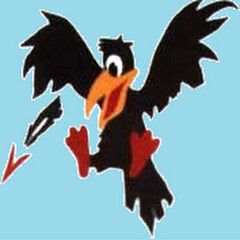


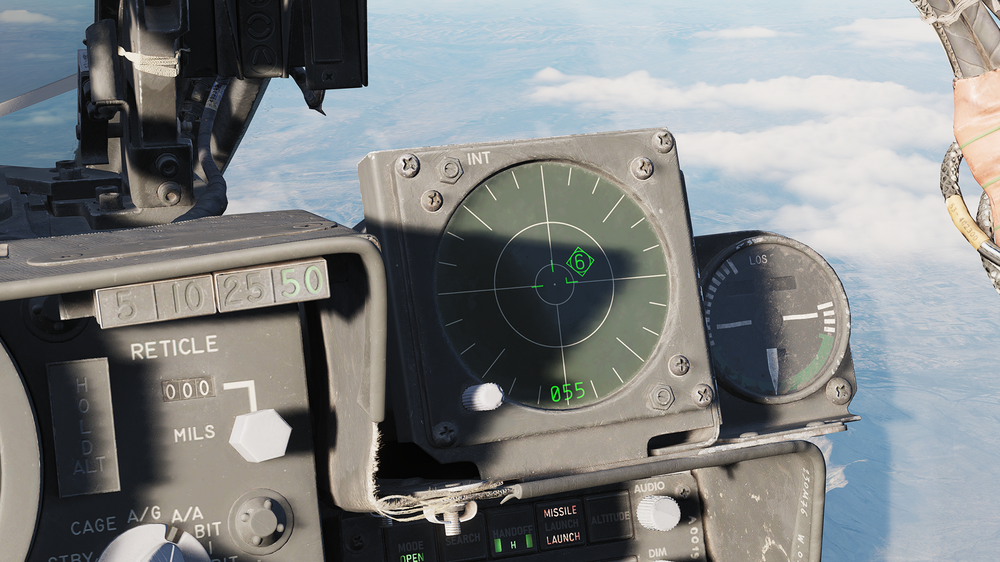
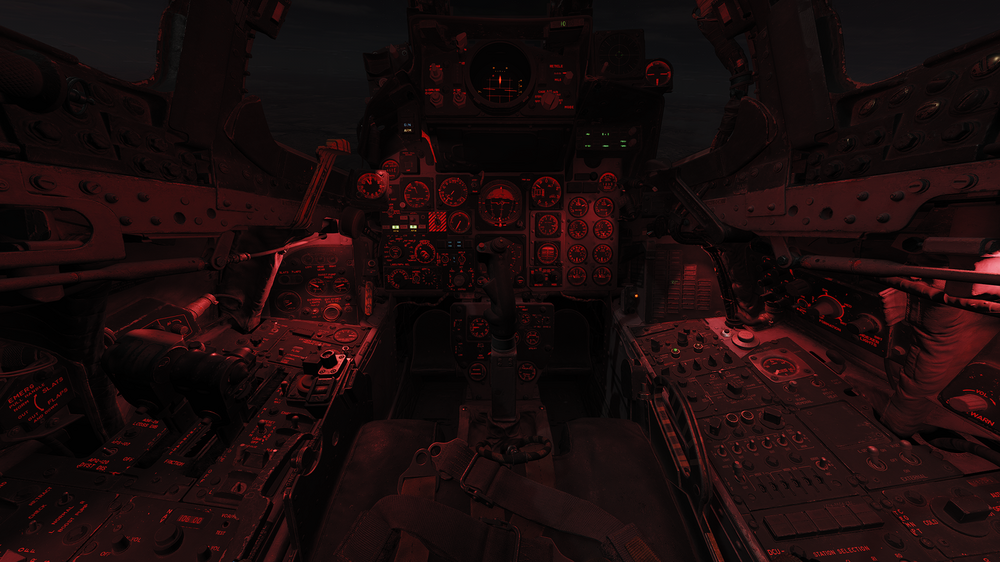
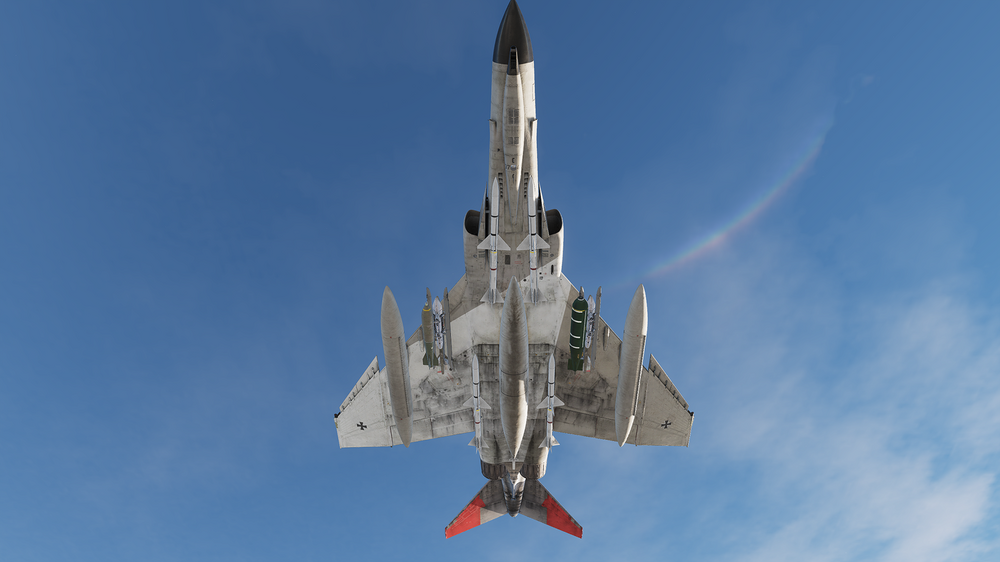
.thumb.png.b454c18bdd476a9cc72c563164db7adc.png)
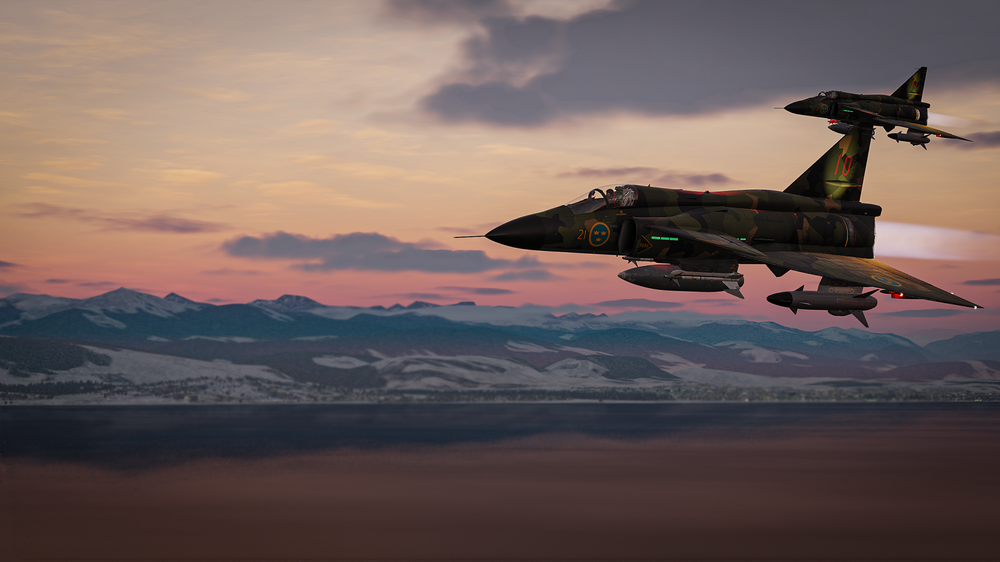





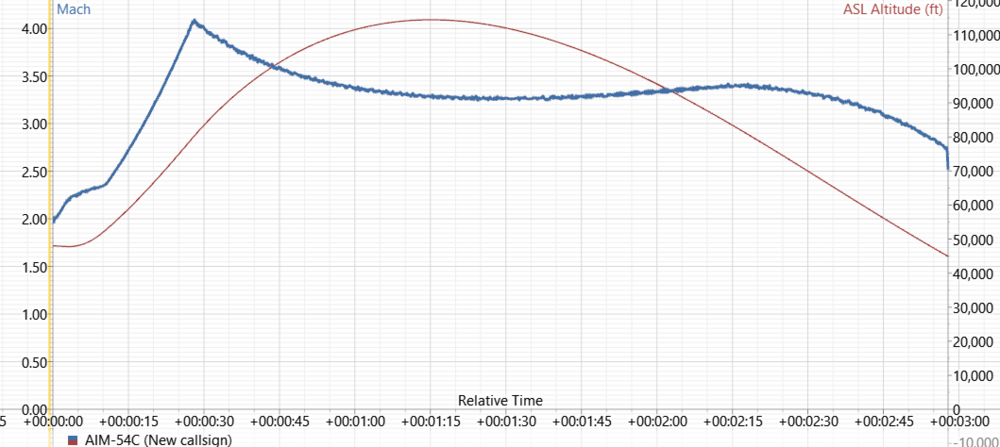

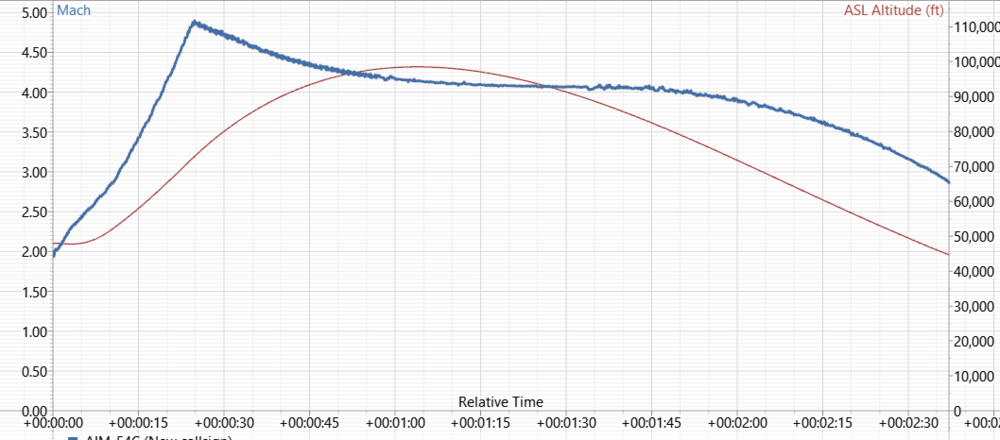


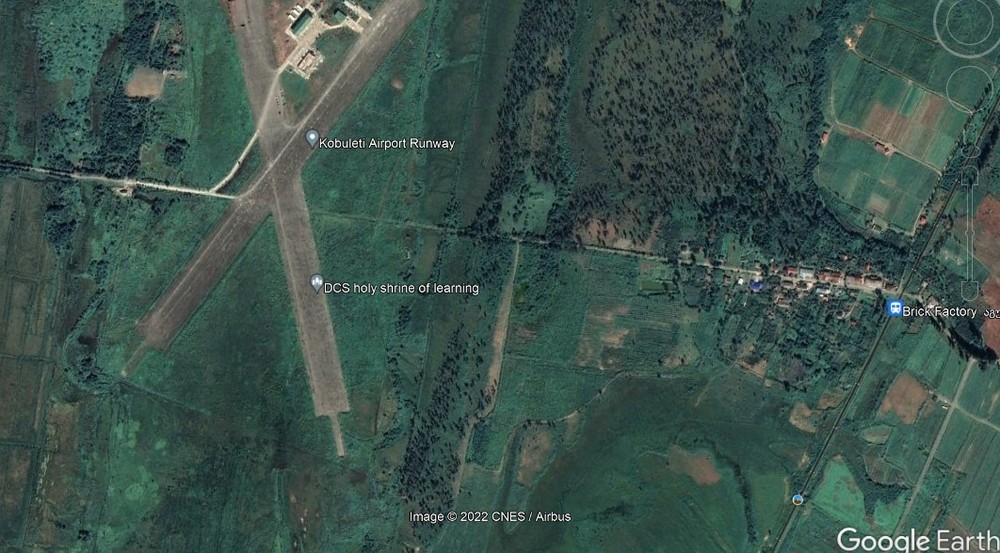
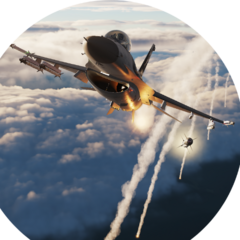

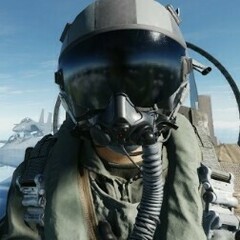
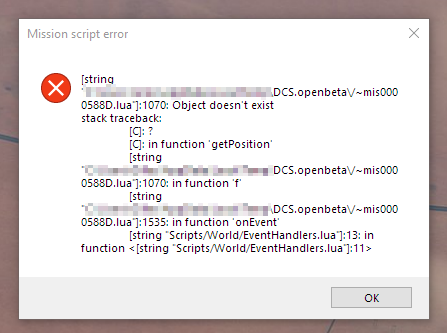



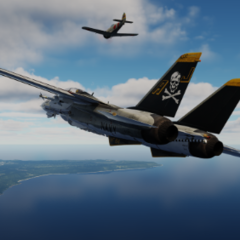
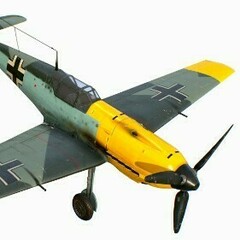
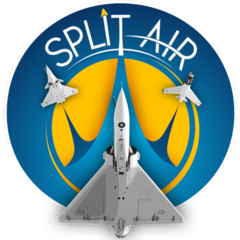
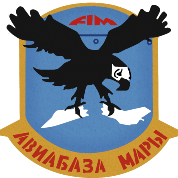
.thumb.jpg.13390782bd9e4ec96218b9fa6f966a25.jpg)


